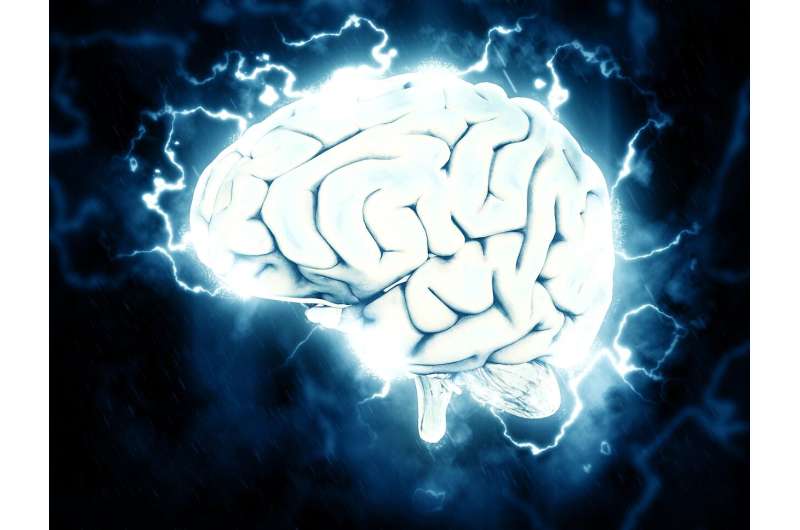
Source: Pixabay/CC0 Public Domain
A study led by researchers at Brigham and Women’s Hospital evaluated 193 participants in the Vietnam Head Injury Study who had suffered penetrating traumatic brain injury. The team found that people with damage to their amygdala, the brain’s fear center, were less likely to develop PTSD. Their results were published in Natural Neuroscience.
“This is a very real brain disease, and we can pinpoint it to certain brain circuits,” said corresponding author Shan Siddiqi, MD, a psychiatrist at the Brigham’s Center for Brain Circuit Therapeutics and assistant professor of psychiatry at Harvard Medical School.
“Unfortunately, people sometimes think that PTSD has to do with how mentally strong or weak someone is, but it has nothing to do with someone’s moral character.”
Siddiqi worked with other researchers at the Brigham Young’s Center for Brain Circuit Therapeutics, as well as researchers from Northwestern University’s Feinberg School of Medicine, Brown University Alpert School of Medicine and Duke University School of Medicine. He said previous studies have shown that people with damage to the amygdala are less likely to develop PTSD, but the team wanted to find a therapeutic target for the condition.
“The amygdala is located deep in the brain, making it difficult to precisely influence stimulation without performing surgery,” Siddiqi said.
Researchers at the Center for Brain Circuit Therapeutics have previously discovered networks to successfully treat depression and addiction using transcranial magnetic stimulation (TMS). Michael Fox, MD, Ph.D., a co-author of the Nature Neuroscience paper and director of the Center for Brain Circuit Therapeutics, said they hoped to build on their success by identifying targets for conditions such as PTSD.
“One of the biggest challenges in developing a brain stimulation treatment for PTSD is identifying the right therapeutic target,” Fox said.
According to Fox, previous trials have attempted to use the same circuit his team developed for depression, but this goal has failed in trials for PTSD.
“Rather than continue with a trial-and-error approach where we test different targets, we mapped the circuit using brain lesions,” he said.
The team looked at 193 patients with penetrating traumatic brain injuries from the Vietnam Head Injury Study, led by co-author Jordan Grafman, Ph.D., at Northwestern. They looked at whether those veterans developed PTSD 20 years after the Vietnam War.
“Some of these veterans who got shrapnel in their heads developed PTSD, but many did not,” Fox said. “The patients actually developed less PTSD than other veterans who did not have brain damage.”
According to Fox, the data Grafman collected was critical to this study because he mapped the exact location of the damage in each patient and pinpointed the neurological effects of the damage.
Researchers then hypothesized that there must be a circuit that, when damaged, protects against PTSD. They used their wiring diagram, the human connectome, to map where brain damage had occurred and where each lesion connected.
From there, they compared the data to 180 veterans who didn’t have brain damage, some of whom had PTSD and some of whom didn’t. They found that connectivity within the circuit correlated with whether or not they had PTSD. Finally, the team looked to see if this circuit would be a good target for treatment by examining previous trials that have used TMS for PTSD.
“The trials where the stimulation hit the circuit we identified were generally the trials that had good results in patients,” Fox said. “We also wondered whether our results could inform how to stimulate the targets, leading to what we believe is a therapeutic target for TMS treatment.”
During the study, a patient with severe PTSD requested TMS at Acacia Mental Health in California, and Siddiqi was consulted to help plan the treatment. After a careful informed consent process, clinicians at Acacia used the circuit found in the study to treat the patient, which ultimately improved his symptoms.
Fox said that while it’s just one patient, the case provides an illustration of how the study’s results can be translated to a clinical setting. Before it can be made available to a larger population, they’ll need to conduct a randomized controlled trial focused on the circuit to get FDA approval.
Siddiqi said one limitation of the study is that they don’t yet know how treatment outcomes might change if someone is in a state of PTSD-induced anxiety at the time of treatment compared to relaxation. Fox added that the study only included veterans, so they’re not sure if PTSD in non-veterans would fit into the same circuit.
“While much work remains to be done, we have taken an important step forward by identifying a therapeutic target for a condition in patients that urgently needs better treatments,” Fox said.
More information:
Possible neuromodulation target for PTSD in veterans with focal brain injuries. Nature Neuroscience (2024). DOI: 10.1038/s41593-024-01772-7
Quote: Study suggests using neurostimulation therapies on a specific brain circuit could treat PTSD (2024, September 24) Retrieved September 24, 2024 from https://medicalxpress.com/news/2024-09-neurostimulation-therapies-specific-brain-circuit.html
This document is subject to copyright. Except for fair dealing for private study or research, no part may be reproduced without written permission. The contents are supplied for information purposes only.
 Healthy Famz Healthy Family News essential tips for a healthy family. Explore practical advice to keep your family happy and healthy.
Healthy Famz Healthy Family News essential tips for a healthy family. Explore practical advice to keep your family happy and healthy.


